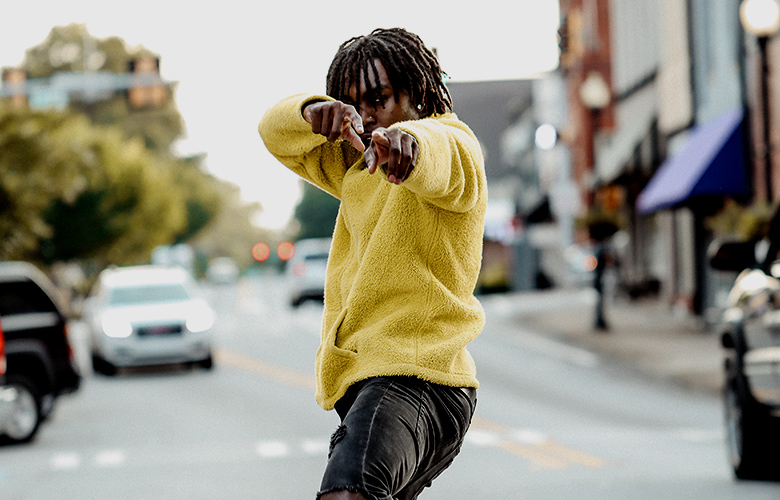
In sports psychology, passion defines the way in which an activity is practiced, the object of the passion, and the way in which it is lived by the person, when becoming part of his or her identity. In Breaking, Bboys and Bgirls often identify themselves with the dance. Therefore, passion is understood as a strong preference of the Bboy or Bgirl towards the Breaking activity that he or she considers important in his or her life, that he or she defines it, likes it and to which he or she devotes time and energy.
The dualistic model of passion developed by Vallerand et al. (2007) distinguishes between two types of passion: the harmonious and the obsessive.
Harmonious passion is considered as the result of the internalization of the Breaking activity in the Bboy or Bgirl’s own identity; it occurs when one freely accepts the exciting activity as important for oneself, regardless of whether he or she has social support to stay in the Breaking activity or not. Although harmonious passion plays an important role in one’s identity, its presence is not overwhelming and leaves room for other vital interests, without other interests or activities in other areas beside Breaking being disadvantaged. Another characteristic of the passion for activity is that it is totally voluntary and flexible. When one possesses harmonious passion, the Breaking activity is controlled in such a way that, when the conditions become harmful, the implication in the Breaking activity is limited or even stopped.
Obsessive passion creates the pure and complete identification of a Bboy or Bgirl with Breaking. Therefore, the Bboy or the Bgirl is completely defined and evaluates him- or herself with the Breaking activity, perhaps forgetting other personal characteristics and talents. Breaking then is associated with feelings of self-esteem, social acceptance or uncontrollable excitement. Obsessive passion is characterized by an over-identification with the exciting activity, as when the Breaking activity occupies all thoughts and overflows the identity. In this situation, Breaking is valued above all the interests of life.
With the obsessive passion, one experiences internal pressure to get involved in the Breaking activity. Participation is not controlled and there is a conflict between the Breaking activity and other activities or interests. In addition, negative emotions and obsessive thoughts about the Breaking activity may occur when it is not being performed.
Passion is what pushes us to do something, even something that takes up a lot of physical sacrifice, time and often also injuries. In Breaking there is a high risk of getting injured and many Bboys and Bgirls suffer from it. For one reason, psychology is intended to provide information on possible psychological variables that might be related to the risk of injury.
A circus artists study (Shrier et al. 2010) showed that low self-efficacy is related with a high risk of getting injured. Therefore, the hypothesis was established that the level of over-training is the result of the accumulation of stress in different areas of the artist’s life, along with limited possibilities of recovery. In addition, it reveals the current level of stress-recovery, since it includes variables that refer to intrinsic and extrinsic sources of stress and regeneration of practice. However, few studies have linked the ability of getting injured to the stress-recovery process and to their type of passion.
To analyse the passion in Breaking, a study was conducted in 2013. The main objective of this study was to evaluate the relationship between the type of passion and the stress-recovery balance within the incidence of injuries, the Breaking experience and the hours of breakdance training in Bboys and Bgirls.
In summary, passion does affect the number of injuries and their recovery. This concludes, that Breaking can directly influence the Breaker’s injury. Specifically, harmonious passion leads to a better over-all recovery. The harmonious passion is related to a high self-regulation, so the number of injuries is lower. There is a better way of physical execution and a greater personal satisfaction for having other columns on which to lean, be distracted by and therefore be able to continue growing as a person and a Bboy or Bgirl.
Here you can read the full abstract:
Psychological aspects of dance: the passion, the stress-recovery balance and injury. Psychological predictors of injuries in breakdancers. (Full text only in Spanish) Master thesis, University of Barcelona. 2013. Escobosa Y.
The aim of this study was to analyse the relationship between the type of passion, obsessive and harmonious, and two variables: the number of injuries and the stress-recovery balance. 19 Breakers (63% Bboys, 37% Bgirls) were analysed with the following instruments: The Passion Scale, the RESTQ-Sport questionnaire and the history of injuries were recorded.
Results showed no statistically significant correlation between the number of injuries in either type of passion nor stress-recovery balance. A statistically significant correlation between harmonious passion and better overall-recovery (p<0.05) has been found. Specifically, harmonious passion relates to a high self-regulation factor (p<0.01).
Although, there was no correlation between the type of passion, stress-recovery balance and injuries, this study has shown that harmonious passion is associated with a greater number of hours of Breaking training, a high self-regulation and a full recovery.
Author: Yaiza Leal Escobosa
• Bgirl since 2006
• Psychologist
• Facebook
• Website
Yaiza Leal was born in Manresa and has been a Bgirl since 2006. She graduated in Clinical and Health Psychology and finished a postgraduate course in Psychopathology at the University of Barcelona. Yaiza additionally finished a Master in Regressive Therapy and is specializing herself in Family and Couples Therapy, Coaching, Psychotherapy and Mindfulness. Besides Breaking, she is an Ashtanga Vinyasa Yoga teacher. Recently she has finished two book projects about self-help and personal growth.
Also By Urban Dance Health:
What’s The Buzz on HIIT? High Intensive Interval Training
Breakdancing: Warm Up Essentials


Urban Dance Health (UDH) is located in Stuttgart, Germany. It consists of a team of three physiotherapists who are internationally established dancers themselves, so they know both the requirements and the needs of dancers. They regularly conduct health workshops for dancers and dance teachers, offer health checks at events and publish tutorials and articles in the Urban Dance Health Blog. The Urban Dance Blog covers topics such as injury prevention, rehabilitation and regeneration as well as scientific research about how to maintain a long and healthy dance career. In order to promote the health of dancers in a sustainable way, UDH now also trains medical professionals in dance medicine. Doctors and therapists require the right tools to respond to the needs of dancers. This creates a worldwide network of health experts who enable interdisciplinary health care for dancers.
Read Full Profile© 2021 TheatreArtLife. All rights reserved.

Thank you so much for reading, but you have now reached your free article limit for this month.
Our contributors are currently writing more articles for you to enjoy.
To keep reading, all you have to do is become a subscriber and then you can read unlimited articles anytime.
Your investment will help us continue to ignite connections across the globe in live entertainment and build this community for industry professionals.